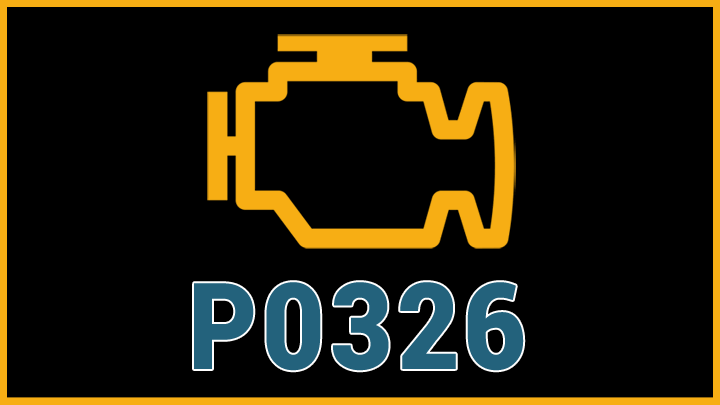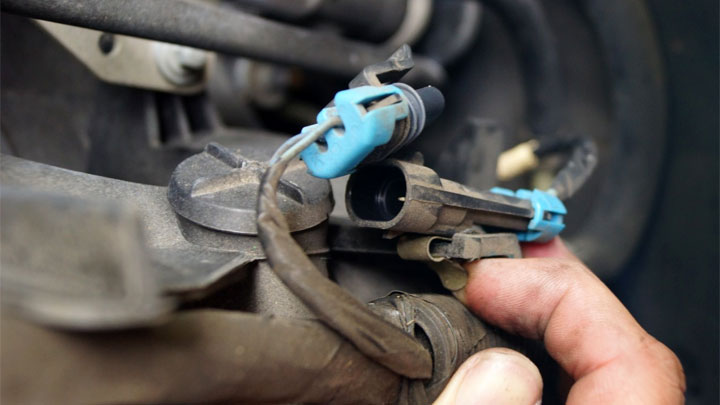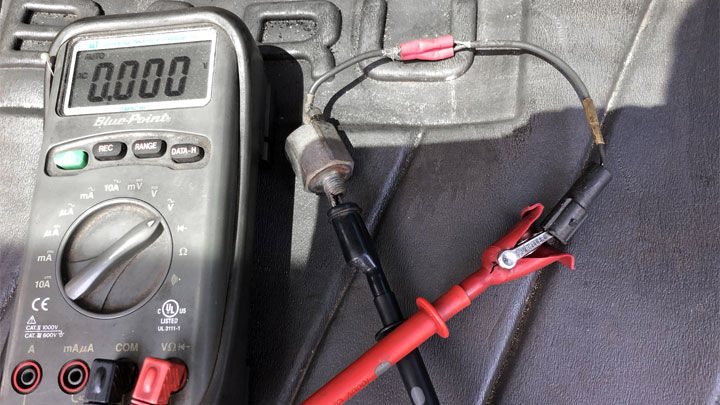P0326 Code (Symptoms, Causes, and How to Fix)
Diagnostic Trouble Code P0326 signals an issue with the engine’s knock sensor. This fault code is rare by today’s standards, leaving many drivers confused.
Continue reading to learn more about the P0326 code, what causes it, and how to properly troubleshoot and fix the problem.

What Does Code P0326 Mean?
Diagnostic fault code P0326 relates to a relative lack of anticipated performance from a vehicle’s knock sensor.
Simply put, feedback within the knock sensor circuit has fallen outside of an acceptable range, as specified by a vehicle’s manufacturer. As a result, fault P0326 is logged, and a check engine light is illuminated.
To better understand the principle above, you must first familiarize yourself with the intended operation of the automotive knock sensor itself.
A knock sensor is used to detect any abnormal harmonic noises within an engine, such as those that are emitted during a pre-ignition event. This data is used by a vehicle’s management software to tweak spark timing as necessary to prevent such instances.
Alternatively, knock sensors can also pick up other irregular noises, such as those resulting from connecting rod or rod bearing failure. For this reason, knock sensor faults should never be ignored or dismissed as being purely incidental, until a true cause for the fault at hand can be isolated.
Related: P0325 Code, P0327 Code, P0328 Code, Code P0332
Symptoms of Code P0326

Diagnostic fault code P0326, at times, can be accompanied by several secondary symptoms, some of which tend to be more severe in nature than others. Those that recognize these symptoms early, can often expedite the diagnostic process as a whole.
The following are several of the most common symptoms associated with DTC P0326.
- Illuminated check engine light
- Engine “pinging” under load
- Audible engine “knock”
- Reduced engine performance
Causes of Code P0326

Diagnostic fault code P0326 can be attributed to one of several different root causes, some being more difficult to pinpoint than others. By familiarizing yourself with these potential causes, you will be better equipped to diagnose such issues with your own vehicle.
Here are several of the most common causes of DTC P0326.
- Faulty knock sensor
- Compromised knock sensor circuit wiring
- Damaged knock sensor connector
- Poor fuel quality
- Internal engine problems
- Failing PCM
Is Code P0326 Serious?
While it is possible to continue driving with an active P0326 fault code, doing so for extended periods of time is not advised. This is especially true if additional codes are stored with DTC P0326, as this would indicate that a true underlying issue is to blame, rather than just a faulty vehicle knock sensor.
In the long run, continuing to drive a vehicle that is experiencing repeated pre-ignition events, such as those indicated by DTC P0326, can be damaging for an engine. Therefore, this fault code should never be ignored in its entirety, or else premature engine wear could come as a potential result.
In any event, the root cause of a vehicle’s P0326 fault code should be thoroughly diagnosed and repaired as soon as possible. Doing so can minimize the risk of incurring permanent engine damage in the long run.
If you’re not confident in your ability to handle these repairs yourself, schedule an appointment with a trusted service center right away.
How to Fix Code P0326

The following steps can be used to isolate and repair the root cause of your vehicle’s P0326 diagnostic fault code. As always, consulting factory-specific service literature for your particular make and model of vehicle is highly recommended.
#1 – Scan for Additional Trouble Codes
Before beginning the diagnostic process, check for the presence of any additional DTCs. Any such DTCs that are present should be thoroughly diagnosed before proceeding.
#2 – Listen for Abnormal Noises
With your vehicle idling, listen closely for any irregular noises from within your vehicle’s engine compartment. Have another person rev your vehicle’s engine, while continuing to listen for any irregularities.
The root cause of any abnormal noises must be isolated before proceeding.
#3 – Ensure Proper Fuel Octane
Use of fuel with a lower than specified octane reading is a common cause of pre-ignition “ping”. If noises of this type are heard, a vehicle’s fuel tank should be topped off with fuel of the correct octane, purchased from a reputable filling station.
#4 – Inspect Knock Sensor Wiring
At this point in the diagnostic process, you should carefully inspect the wiring associated with the engine’s knock sensor for signs of damage.
In addition, the sensor’s connector should be checked for signs of water contamination or corrosion. Any such defects that are found should be corrected before proceeding.
#5 – Test Knock Sensor Per Procedure
If no obvious issues have been uncovered to this point, the affected knock sensor should be tested with a quality multimeter. These tests should be conducted as directed by factory-specific service literature for your particular vehicle, as testing procedures often differ by manufacturer.
Out of range test readings would ultimately necessitate replacement of the sensor in question.
- 5 Symptoms of an EVAP Leak (and Repair Cost) - Apr 27, 2024
- P0480 Code (Symptoms, Causes, and How to Fix) - Apr 19, 2024
- Car Temperature Gauge Stopped Working? (Here’s Why) - Apr 15, 2024
